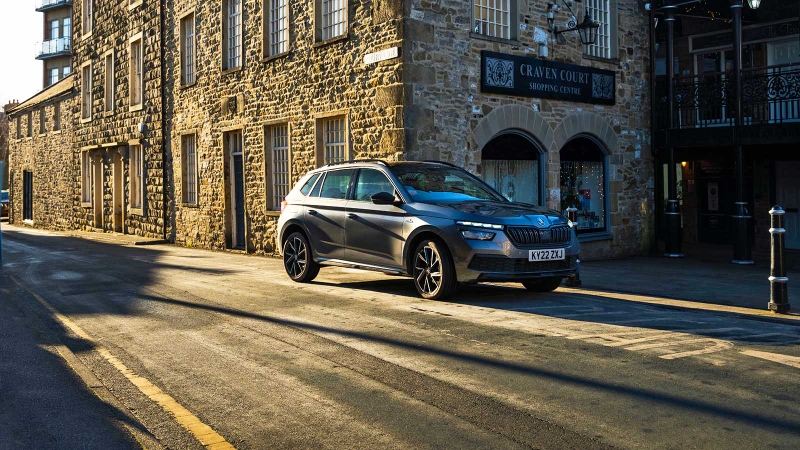
Volkswagen T-Cross engines, driving and performance
Gallery
How does the Volkswagen T-Cross drive?
The Volkswagen T-Cross drives much like most other small VW Group cars – it’s extremely competent but doesn’t bring anything unique or unusual to the party. But would you want it to?
Your first impression might be the light, easy-to-press clutch pedal, or the similarly light steering, which is kind of numb. No surprises – many small SUVs aim to remove you from what’s going on underneath. We’re pleased to report that the steering is probably exactly how you’d want it to be set up, because it makes the T-Cross manoeuvrable at low speeds but it doesn’t become twitchy at high speeds.
The overriding feel is a car that’s been primarily designed to be easy, which we really like. Most journeys are mundane and ordinary, so the T-Cross covers these journeys with aplomb.
There’s a bit of body roll through fast corners – you sit higher up than a Polo and you can feel that – but the T-Cross doesn’t at all feel out of place on fast roads. It’s not exactly fun to drive, but it’s responsive enough and not at all bad to drive.
Is the Volkswagen T-Cross comfortable?
Impressively for a small SUV, the T-Cross is just as refined as the bigger, costlier VW Tiguan. You get some road noise invading the otherwise quiet cabin but it’s no worse than most rivals.
Like its bigger siblings, the T-Cross also manages to filter out the big impacts from potholes and ruts. The ride gets better at speed – in town, the T-Cross occasionally seems to pogo over bumps just a little bit.
What’s the best engine to get?
With no diesel or hybrid engines to choose, your T-Cross is guaranteed to be petrol powered. Most cars come with a 1.0-litre petrol engine, which is available with 95hp or 115hp. Both are turbocharged for better acceleration – VW hasn’t offered the T-Cross with the Polo’s lethargic non-turbo MPI engines, thankfully.
The 95hp engine has more than enough power for urban and suburban driving, but for long journeys we'd recommend the 115hp version or the 150hp 1.5-litre petrol. The middle option is probably the pick of the range – it’s quick-ish off the line and comes with a six-speed manual gearbox rather than the five-speed fitted to 95hp versions, improving high-speed refinement.
Up to 50mpg is possible from the T-Cross, putting it right among its nearest rivals. We saw 44mpg without driving particularly economically, so VW’s figures look achievable in real driving. Stick to the 95hp engine and you’ll enjoy the lowest insurance costs in the range, too.
An automatic gearbox becomes available on the 115hp engine, and it’s standard on the 150hp engine. Unless you need an auto or are regularly crawling through gnarly traffic, the manual is the better choice – the DSG automatic can sometimes be a little slow to respond.
Volkswagen T-Cross performance
As every T-Cross is turbocharged, all offer at least satisfactory performance. The entry-level 95hp engine hits 0-62mph in 11.2 seconds – which makes the T-Cross look like an Olympic sprinter compared to the sluggish Renault Captur. Opt for the 115hp engine and that’s knocked down to 10 seconds exactly.
The 115hp engine is the one we’ve tested most extensively. It’s punchy enough to nip into gaps in traffic, and will get you up to main-road speeds without any fuss whatsoever. However, it doesn’t have much power at all in sixth gear, so you might need to drop down a gear or two on a motorway slip road or when overtaking.
Above that is the 150hp 1.5-litre engine. It’s limited to high-spec trim levels but is quite a rare choice anyway, because most buyers are happy enough with the 1.0-litre engine. Find one and the performance is much sprightlier, with 0-62mph knocked down to 8.4 seconds and more oomph at higher speeds.























































